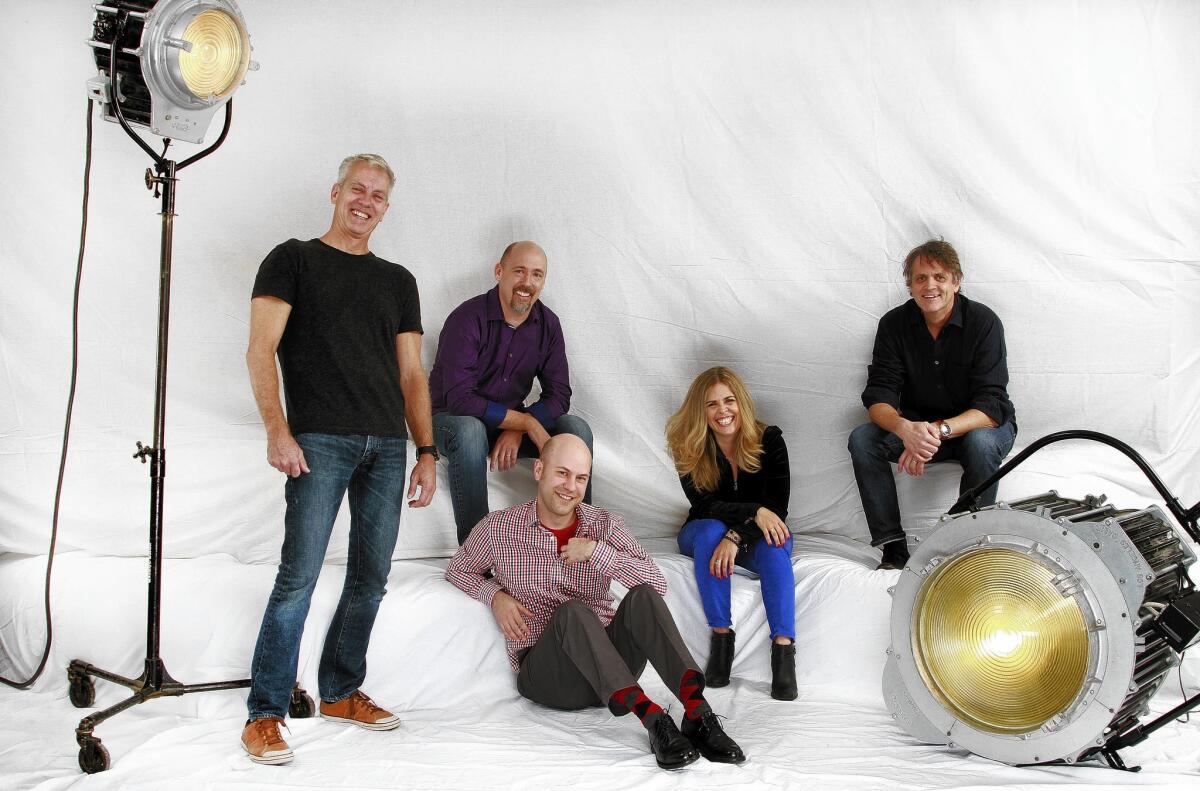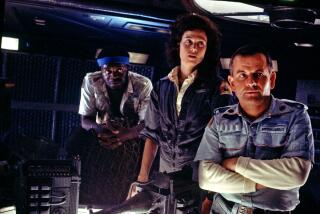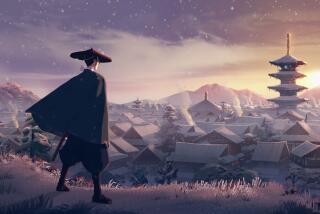Drawing inspiration between the lines of animation

As feature animation becomes an increasingly crowded field, the pressure to create appealing and enduring characters with thrift and speed has intensified. Five directors recently came together for the Envelope Animation Round Table to discuss the artistic and business forces driving the medium today. In a conversation at the Los Angeles Times, Jennifer Lee (“Frozen”), Chris Renaud (“Despicable Me 2”), Chris Sanders (“The Croods”), Dan Scanlon (“Monsters University”) and Chris Wedge (“Epic”) tackled such topics as the challenges of female characters, the effect of celebrity voice actors and the changing economics of feature animation. Here are edited excerpts from the conversation:
VIDEO: Animators roundtable: Full interview
How do you decide how cartoony to go?
Wedge: The style of the film, the tone of the film. Is it a comedy? Is it an adventure movie? What do you want it to look like? On what level do you want the things to emote? We pushed really hard to make characters that were as proportionately realistic as we could. On “Epic” I wanted to make a film that felt like a live-action adventure movie and less like a cartoon just because we’d done all that and I wanted to try something different.
Renaud: Drawing is inherently funny and appealing. Computer animation is inherently unfunny and unappealing. It’s trying to find that life in it, that spontaneity that a drawing has almost automatically. How do you find that kind of energy and life in the computer?
Wedge: And that’s a huge word for what our craft involves, it’s spontaneity, because our process is anything but. Our films take three or four times longer than live-action films, everything you see on the screen is something we thought of and designed, so it’s not just asking a character to bring some motivation to the set. It’s like, “Let’s move his eyebrow up this far on that frame because I don’t think the expression is quite exactly this.”
Scanlon: We’re always trying to find ways to force spontaneity. You know you get it from your performers and your actors, but how do you get it in a world where you can do everything? Our character of Art was completely made more or less by neglect on my part — I mean bad direction. We didn’t know who the character was, we couldn’t figure out who he was, the artists were kind of struggling, and at one point somebody just drew an A for Art and put eyeballs on it. And I was like, “That’s kind of cool looking.” The story artists just started to write funny non-sequitur lines because they didn’t know who the hell he was. And at some point, we realized that’s who he is, he’s that guy in college that you know nothing about. And I was so happy that a character was born out of neglect and spontaneity, but it’s hard to find and I think that whenever you can get that it’s good, it makes the world feel real.
VIDEO: Animators answer how they decide how cartoony to go
Do you think about the gender of a character when you’re designing it?
Sanders: We have to think about it a lot. Eep — we wanted her to be caveman pretty. ... She has smooth, pleasing shapes but she really is sort of anti-anything I’ve ever worked on before. She has kind of a swimmer’s body, really, really, really wide shoulders and tapering shapes on her arms and legs. We wanted her to feel graceful ... fast and light and agile.
Scanlon: With Dean Hardscrabble, in our first pass we had defaulted to a male character. And it wasn’t until further on in the process that I thought, “We’re missing out on an awesome opportunity to really feature a great female scarer.”
Lee: We had the challenge of sisters. Everything about Anna is very open, and she’s very warm, and her colors are warm, and she’s someone who acts before she thinks, and she moves too fast, and she talks too fast. So everything about her was building her for this bigger expressiveness and this openness. And then everything about Elsa is controlled, so it’s very poised. In her design, everything’s drawn more vertical.
Renaud: Designing female characters can be very tricky. Sometimes you can go broader with a male character. Our production designer, Eric Guillon, did this wonderful drawing [of Lucy], she just looked like a ray of light standing next to this dark mass of Gru. So there was a great contrast. We wanted her to be appealing but not perfect.
VIDEO: Animators talk about what they cannot do in animation
How much did your voice actors influence the way your characters looked and behaved?
Wedge: I like to cast so that we don’t always picture the actor’s face when you hear the voice. Casting the voice is a very important part of marketing the movies ... but we do try to keep the designs in a place where it isn’t just evoking that actor.
Sanders: We had two voices that were very, very critical. One of them was Nicolas Cage. He plays a role where he’s a protective dad, so he’s all about “no.” We needed to find a voice where you could sympathize with this guy and you wouldn’t feel like he was just a drag. As far as actual movement was concerned, Emma Stone was the most animated actor I’ve ever directed, she could change expressions so quickly that I actually doubted we could do it in animation and make it believable.
VIDEO: Animators talk influence of voice actors on thier characters
Animated films tend to have pretty large budgets and pretty long schedules. How does that influence the creative decisions you make?
Renaud: What we are going to see is a pressure to start lowering budgets and time frames. The days of five years of a movie in development and being made are probably coming to an end. And that’s mostly because of competition, it used to be there was one, maybe two animated films each year, room for everybody. There’s not room for everybody anymore.
Do you think about international audiences a lot?
Renaud: Pierre [Coffin], my directing partner, is French and we make it with a French team, so we think about it a lot. Our writing team is here in L.A. and one of our producers, Chris Meledandri, is here in L.A. and one’s in Paris, and there’s always a gag that’s very culturally specific and Pierre will be like, “Yeah, no one’s going to understand that outside of the United States.” And so invariably we’ll have a discussion, like, “Well, maybe it’s worth it,” or we’ll find something that’s more universally known.
Lee: We do show it to all the teams from around the world and they talk about things that are challenging. ... On “Wreck-It Ralph,” we had some trouble with Vanellope in some of the countries because a sassy little girl who was standing up to an adult man was challenging, and we had a few times where they asked us to change the dialogue for the dubbing, and we had long debates about it.
Sanders: In “The Croods,” I didn’t know how international it was because we didn’t have anything of cultural significance that was obvious. They don’t have jobs and they don’t have cars and they don’t have shoes, until later. But as we traveled with the film, when we went to France they’d say, “Oh, clearly you were looking at a French family.” And the same thing would happen when you went to China or Italy. I guess dads and moms and kids are pretty much the same the world over.
More to Read
Only good movies
Get the Indie Focus newsletter, Mark Olsen's weekly guide to the world of cinema.
You may occasionally receive promotional content from the Los Angeles Times.











